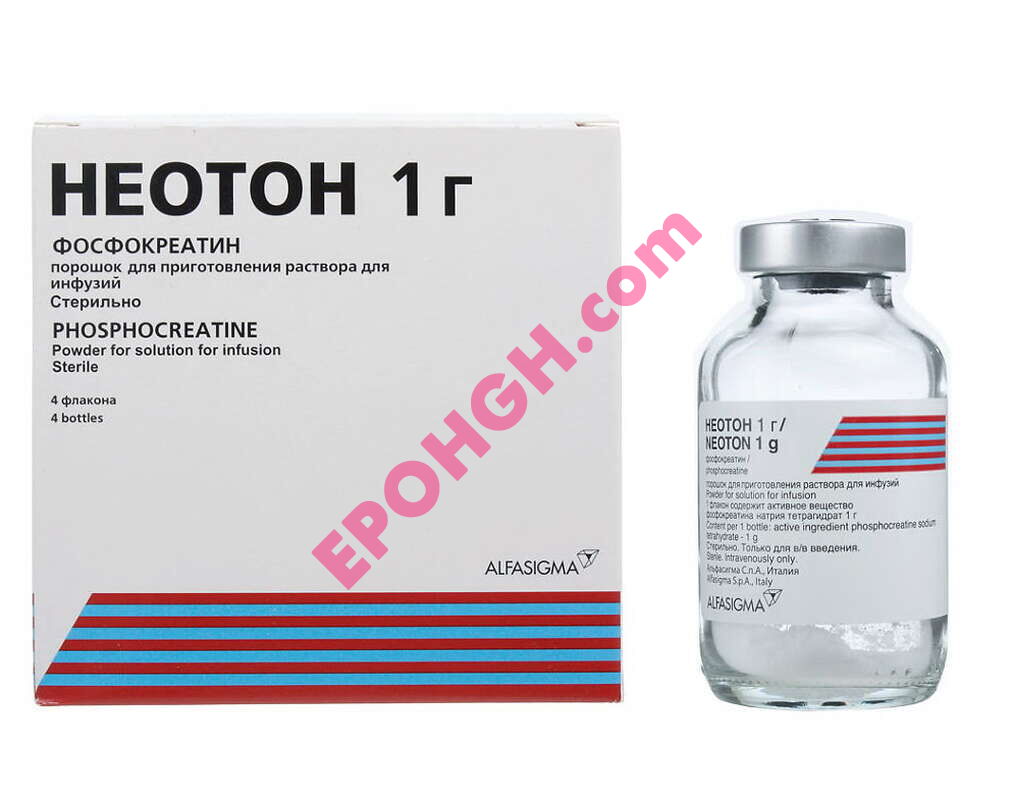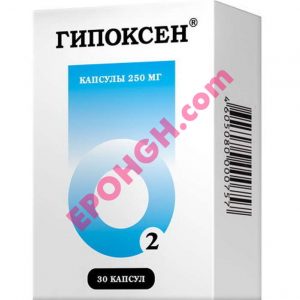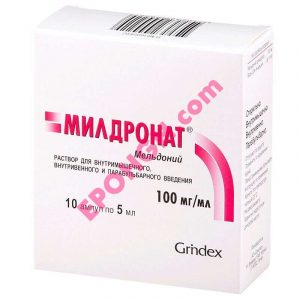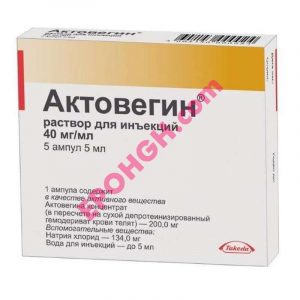$288.00
Description
pharmacological group metabolic agent.
Pharmacodynamics
Phosphocreatine plays an important role in the energy mechanism of muscle contraction. It is an energy reserve in the cells of the myocardium and skeletal muscles and is used for the re-synthesis of adenosine triphospheric acid (ATP), the hydrolysis of which releases energy to ensure the reduction of actomyosin.
Insufficient energy supply to cardiomyocytes associated with a slowdown in oxidative processes is a key mechanism for the development and progression of myocardial damage. The lack of phosphocreatine leads to a decrease in the force of myocardial contraction and its capacity for functional recovery. In myocardial injury, there is a close correlation between the amount of energy-rich phosphorylated compounds in the cells, the viability of the cells, and their ability to restore contractility.
Preclinical and clinical studies have shown the cardioprotective effect of phosphocreatine, manifested in a positive dose-dependent effect with myocardial toxic effects of isoprenaline, thyroxine, emetine, p-nitrophenol, in a positive inotropic effect with a deficiency of glucose, calcium ions or an overdose of potassium ions, in reducing the negative inotropic effect caused by anoxia.
Furthermore, the addition of phosphocreatine to cardioplegic solutions at a concentration of 10 mmol/L enhances the cardioprotective effect:
– the risk of myocardial ischemia is reduced with cardiopulmonary bypass grafting,
– the risk of developing reperfusion arrhythmia during perfusion is reduced before the development of experimental regional ischemia as a result of ligation in the anterior descending branch of the left coronary artery for 15 minutes,
– reduces the degradation of ATP and phosphocreatine in myocardial cells, preserves the structure of mitochondria and sarcolemma, improves the process of functional recovery of the myocardium after cardiac arrest caused by the administration of a large dose of potassium, and reduces the rate of reperfusion arrhythmia.
Phosphocreatine has a cardioprotective effect in experiments with myocardial infarction and arrhythmias caused by occlusion of coronary arteries: preserves the cellular pool of adenine nucleotides by inhibiting the enzymes that cause their catabolism, inhibits phospholipid degradation, possibly improves microcirculation in the zone of ischemia mediated by adifoctic acid suppression, stabilizes hemodynamic parameters, prevents a sharp decrease in functional parameters of the heart, has an antiarrhythmic effect, reduces the frequency and duration of ventricular fibrillation, and limits the zone of infarction of myocardium
Neoton (phosphocreatine) is a drug that improves the metabolism of muscle and myocardial tissue.
Phosphocreatine – found in high concentration in the myocardium, skeletal muscles, smooth muscles, retina, nerve tissue cells, sperm. It plays a key role in the energy supply of muscle contraction, carrying out the intracellular transport of energy from places of production to places of use. With the depletion of phosphocreatine stores, the cell loses its ability to contract even if there is a sufficient amount of ATP.
Neoton provides intracellular energy transport, slows down the decrease in cardiac muscle contractility during ischemia. Neoton inhibits platelet aggregation and increases the plasticity of erythrocyte membranes.
After being introduced into the blood, exogenous phosphocreatine is inactivated much more slowly than ATP.In addition, this compound has the property of selectively accumulating in tissues with a higher metabolic rate.
The positive effect on myocardial metabolism and microcirculation allows Neoton to be used in sports medicine to prevent the adverse effects of excessive physical training.
Furthermore, Neoton can be used in neurology to treat patients with acute impairment of cerebral circulation.
Pharmacokinetics:
With a single intravenous infusion, the maximum concentration of the drug in the blood is determined over 1-3 minutes.
The half-life in the fast phase is 30-35 minutes. The half-life in the slow phase is several hours. It is excreted by the kidneys.
The greatest amount of the drug accumulates in skeletal muscles, myocardium and brain. In the tissues of the liver and lungs, the accumulation of the drug is negligible.
Neoton Indications for use:
- acute myocardial infarction,
- intraoperative myocardial ischemia,
- intraoperative limb ischemia,
- chronic heart failure,
- acute disturbance of cerebral circulation,
- in sports medicine: prevent the development of a physical overtraining syndrome and improve adaptation to extreme physical activity
pharmacological interaction:
When used as part of complex therapy, Neoton increases the effectiveness of antiarrhythmic, antianginal and cardiotonic drugs.
INDICATIONS FOR THE USE of Neoton (Phosphocreatine) IN SPORTS
- Metabolic disorders in the myocardium.
- Prevention of the development of overvoltage syndrome, with prolonged physical activity in hypoxic conditions.
- Recovery of work capacity after starts in order to prepare for the next starts on the same day.
- Increase the power of special work ability.





